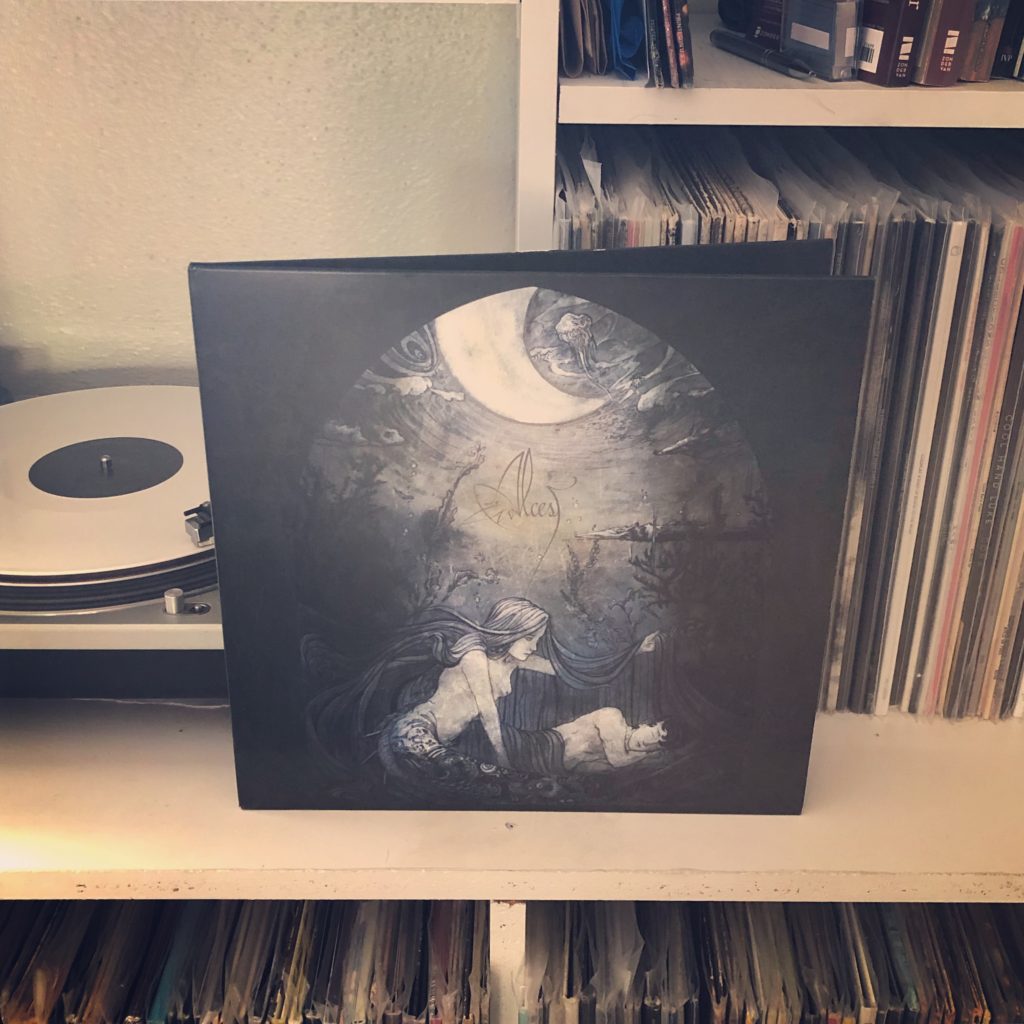
Black metal has been undergoing a bit of a revolution in the last few years. Bands like Deafheaven, Wolves in the Throne Room, and Lantlôs have been augmenting their metal chops with elements of post rock and shoegaze. It’s a simple formula, but surprisingly effective.
But at the forefront of the “blackgaze” movement is a French group called Alcest, who wrote much of the blueprint on their breakthrough record Écailles de lune.
Alcest began all the way in the year 2000 (!!!) as a pretty typically church-burning black metal trio. After recording a single demo (which can be heard here), two thirds of the group went on to other projects, leaving Neige (then 15) as the solo member.
Neige jumped through a series of other projects, using Alcest as a vehicle to explore his fascination with My Bloody Valentine, Mogwai, and Sigur Ros. Also according to Neige, when he was a child he used to imagine a magical world filled with glowing forests, enchanted wildlife, and friendly spirits—Alcest served as an attempt to imagine what type of music would come from that world. If that sounds too precious for a black metal frontman, it probably is. But having seen Alcest live, Neige is a pretty precious person, speaking in the most delicate French-accented voice anyone has ever heard.
After a few side projects and two releases as the sole member, Neige brought his former Peste Noire bandmate Winterhalter, also a member of Les Discrets into Alcest as full-time drummer. Interestingly, the two-minute “Abysses” doesn’t feature either member of Alcest, but instead was created by Les Discrets bandleader Fursy Teyssier, who also painted the album art.
The addition of Winterhalter seemed to have bolstered Neige’s metal chops, because Écailles de lune (Scales of the Moon) is heaviest thing they had done since the first demo. The jangling clean guitar passages are juxtaposed against amp-blowing distortion. The drums vary between post rock grooves and double-pedaled black metal blast beats. Neige’s vocals between gentle shoegaze cooing and corpse-painted shrieks.
“Écailles de lune pt. 1” opens the record with a ten minute journey through the group’s sonic palette, opening with a Cure-esque riff and moving through synth-augmented walls of guitars before ending with a full-blown black metal catharsis. “Pt. 2” starts where the first part ended, Neige screaming above the din before transitioning into anthemic post rock. “Solar Song” flexes the group’s shoegaze chops, playing a midtempo ballad with as much sonic heft as they can muster.
On the epic eight-minute closer, “Sur l’océan couleur de fer,” Winterhalter almost sits out entirely, barring a few flourishes at the end. Instead of a fiery black metal palette, Neige’s mournful voice and clean guitars are augmented with strings, synths, and a soaring alto. The song restrains itself from the any kind of metal explosion, which plays to the tension of the album’s theme.
According to Neige, the record tells of a man’s choice to pass through one world into another—a thought he had while staring off across the sea one day as his mind. The record is in French (except for “Solar Song,” which is allegedly in English, but his accent is strong enough that it still sounds like French), so I’ll have to take his word for it. But sonically, it does feel like that. It is covered in the bittersweetness of making a journey into the unknown: a mourning for the things you would lose, an excitement for every good new thing you might discover, a fear of the danger present in the unknown.
I had first gotten into Alcest with the album after this, Voyages de L’Âme, and have been obsessed with 2016’s Kodama since its release, but I hadn’t delved much further into their catalog. But seeing them live last month opened up their discography to me. And having a broader scope of their work, Écailles de lune is, to a large degree, the archetypal Alcest record. All of their trademark elements are present, in the perfect ratio. I’m not sure if it’s their best record (I’d still say it’s Kodama), but it is certainly the most definitive.